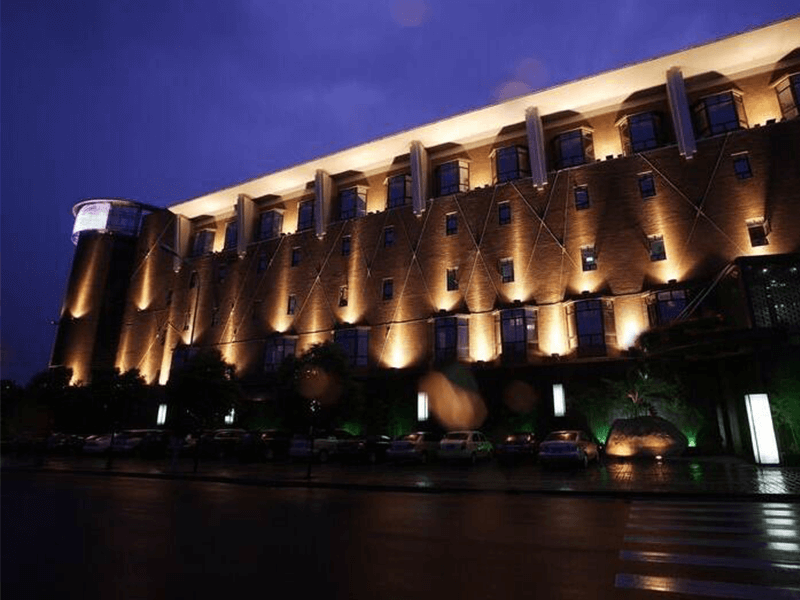Programming a DMX controller involves several steps, and the process may vary depending on the specific controller model and the desired lighting effects. However, some general steps can be followed to program a DMX controller:
1. Set Up the DMX Controller
The first step is to connect the DMX controller to a power source, a power outlet, or a battery pack, depending on the controller’s specifications. The power supply should have the appropriate voltage and current rating to avoid damage to the controller and the connected fixtures.
Next, the lighting fixtures should be connected to the DMX controller using DMX cables. These cables are designed to transmit the DMX signals from the controller to the fixtures, and they come in various lengths and configurations. Therefore, it is essential to use high-quality DMX cables to ensure reliable and error-free data transmission.
Once the fixtures are connected, they must be addressed appropriately to correspond with the DMX channels. This involves assigning a unique DMX address to each fixture to allow the controller to communicate with them individually. Depending on their type and model, the DMX address is usually set using dip switches or software on the fixtures.
After the fixtures are addressed, the DMX controller needs to be programmed to control the fixtures’ attributes, such as color, intensity, and effects. This involves creating scenes or programming chases and sequences of different scenes that can be played back in a loop or triggered manually.
2. Assign DMX Channels
Assigning DMX channels involves specifying a unique number for each lighting fixture connected to the controller. This is necessary to ensure the controller can accurately identify and control each fixture independently. For example, the channel numbers can be assigned manually by programming the controller, or some controllers have an automatic addressing feature that gives channel numbers automatically.
It is crucial to ensure that no two fixtures are assigned the same channel number to prevent conflicts and that each fixture responds correctly to the controller’s commands. This is especially important in large-scale lighting installations with multiple fixtures, where the system’s complexity makes it challenging to track channel assignments.
Assigning DMX channels typically specifies the channel number and the fixture’s mode or function, such as color, intensity, or movement. Some controllers allow for more advanced programming, such as setting up sequences or chases, which involve linking multiple fixtures to create dynamic lighting effects.
3. Create Scenes
After assigning DMX channels to each lighting fixture, the next step is to create scenes. Scenes are pre-set lighting effects that can be easily recalled and used anytime. For example, to create a set, adjust the lighting fixtures’ settings, such as color, intensity, and position, to achieve the desired effect. This can be done using the DMX controller’s user interface, which may vary depending on the controller type.
Once the desired lighting effect has been achieved, the settings can be recorded on the DMX controller by assigning them to a specific DMX channel. This allows the scene to be easily recalled and applied to the fixtures whenever needed. Different settings can be created for various events or occasions, providing a high level of versatility and flexibility in the lighting design.
It is essential to ensure that the DMX controller can store multiple scenes to provide more options for different lighting effects. Additionally, the settings should be organized and labeled to make them easy to recall and use when needed. This ensures that the DMX controller’s full potential is realized and the lighting design is optimized for the space and its intended use.
4. Create Chases
Creating chases in a DMX controller involves programming a sequence of scenes that can be played in a specific order. This allows for dynamic and visually stunning lighting effects that can be used in various settings, such as concerts, theatrical productions, and other live events.
To create a chase, the user must first program multiple scenes into the DMX controller. These scenes can be made by adjusting the lighting fixtures’ settings, such as color, intensity, and position, and recording them on the DMX controller by assigning them to specific DMX channels. Once the scenes are programmed, the user can set the order in which they should play by selecting the appropriate channels and adjusting the timing between each stage.
Chases can be programmed to run continuously or triggered manually or by an external control signal. DMX controllers typically offer a range of chase options, including speed control, direction control, and the ability to loop or repeat the sequence. Some DMX controllers also allow users to create custom chases using a graphical interface, making it easier to design complex lighting effects.
5. Test and Adjust
Testing and adjusting the DMX controller is essential in ensuring the lighting effects work correctly. During this process, it is vital to check that each fixture is responding to the correct DMX channel and that the scenes and chases are playing in the intended order.
To test the DMX controller, activate each scene and chase to ensure they function as intended. It is also essential to check the timing of the sequences and adjust them if necessary. Verify that the lighting fixtures are dimming, color-changing, or moving according to the programmed effects.
Once the initial test is complete, it is time to make necessary adjustments. This may involve fine-tuning the fixtures’ color, intensity, or movement or adjusting the scenes’ and chases’ timing and order. Therefore, testing the changes thoroughly ensures they produce the intended effect is essential.
